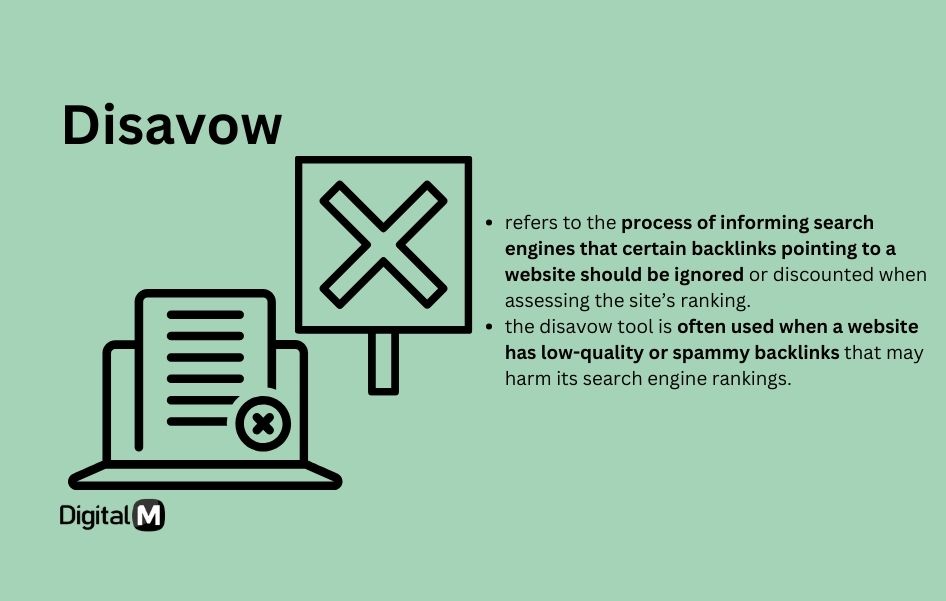Disavow
Disavow in the context of SEO (Search Engine Optimization) refers to the process of informing search engines that certain backlinks pointing to a website should be ignored or discounted when assessing the site’s ranking. The disavow tool is often used when a website has low-quality or spammy backlinks that may harm its search engine rankings.
Disavow:
Disavow is an action taken by webmasters to disassociate their website from specific backlinks. Webmasters submit a disavow file to search engines, indicating the links they want the search engine to ignore when evaluating the site’s ranking.

Imagine you have a list of recommendations, but there are a few that you don’t want anyone to consider. Disavowing backlinks is like telling search engines, “Please ignore these particular recommendations; they’re not helpful or relevant.”
Key Points:
Backlink Quality: Disavow is typically used for low-quality or spammy backlinks that might negatively impact a website’s search engine ranking.
Disavow File: Webmasters create a disavow file containing a list of URLs or domains they want search engines to disregard. This file is then submitted to the search engine through its webmaster tools.
Cautionary Measure: Disavowing backlinks is a cautious measure and should be used judiciously. It’s generally employed when efforts to remove harmful backlinks manually have been unsuccessful.
Example:
Suppose a website notices a sudden decline in search engine rankings, and upon investigation, the webmaster discovers that the site has acquired several backlinks from spammy sources. To mitigate the impact, the webmaster may create a disavow file listing those unwanted backlinks and submit it to the search engine.
In summary, the process of disavowing involves informing search engines that certain backlinks should be disregarded when assessing a website’s ranking. It is a strategic measure used to address issues with low-quality or harmful backlinks that could negatively impact a site’s SEO performance.

